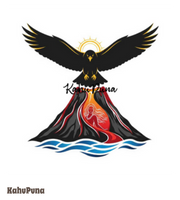Save Kumukahi from brainless geothermal desecration and expansion!
- wearepuna
- May 24
- 2 min read
Located at the easternmost point of the Hawaiian Islands, Cape Kumukahi holds a special place in ancient Hawaiian mythology as this was where the gods and goddesses first arrived in the islands from Tahiti. It was here that the fire goddess, Pele, unleashed her wrath upon the mythical figure Kumukahi, the man after whom the cape is named. And, most importantly, it was where a sacred but little-known heiau, or temple, was established in the 15th century CE. The Kukii Heiau, which still exists today, is hidden among the jet-black lava of Cape Kumukahi, but it holds a fascinating history which connects the past to the present.
THE MYTHOLOGICAL ORIGINS OF CAPE KUMUKAHI
The Kukii Heiau is situated directly on Cape Kumukahi, a word which means 'beginning' or 'origin'. According to Hawaiian legend, the cape was formed when a chief named Kumukahi participated in a sled race and mocked a beautiful woman. This woman was the goddess Pele in disguise, and, in a fit of anger, she sent a river of lava after him. The lava flow destroyed the town in which Kumukahi lived, Kapoho, and created the landscape on which the heiau exists today.

In other legends, the cape was the point at which the god Kumukahi and other deities arrived in the Hawaiian Islands from Tahiti, and thus, Cape Kumukahi held spiritual significance for the ancient Hawaiians. Kumukahi was a relative of Pele, the lava goddess, and arrived on the Big Island with two siblings: Palamoa, his brother, and Ka-hikina-a-ka-la (known in English as Sunrise). Palamoa was the god of fowls, and Kumukahi was a healing deity who could transform into a man or a kolea bird at will. Therefore, given the religious importance of the area, it was no surprise that Chief Umi, an ali'i 'ai moku (district high chief) of Hawaii, constructed the Kukii Heiau there in the 15th century CE.

see good webpage here detailing the history of this heiau here : https://www.worldhistory.org/Kukii_Heiau/#:~:text=Located%20at%20the%20easternmost%20point,which%20the%20heiau%20exists%20today.
This is among the most hidden wahi Pana in the entire Hawaiian Kingdom. The native Hawaiian cultural convention does not even recognize it in its Moku o Keawe annual cultural event. They include all other districts except Puna, due to geothermal interests. From all my research, I have discovered that Puna is traditionally the most culturally important, as this location, Kumukahi, is where all life originated. -KahuPuna
end the lies
end the desecration
end the cover ups
end Waika comsulting
end pgv
end geothermal
mahalo
Jazzy
KahuPuna
Aloha Activism




Comments